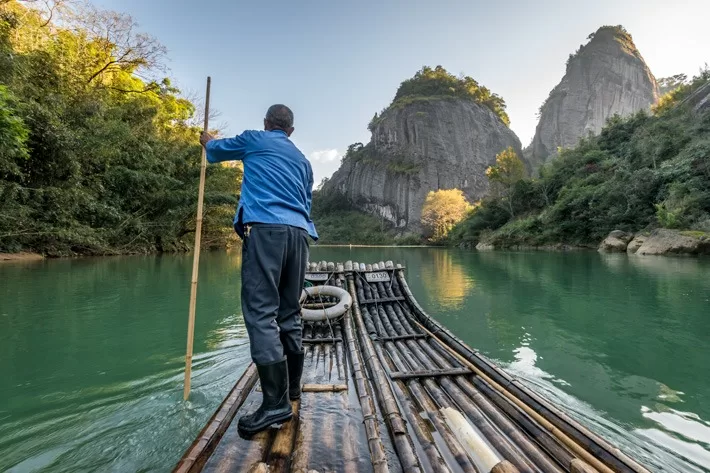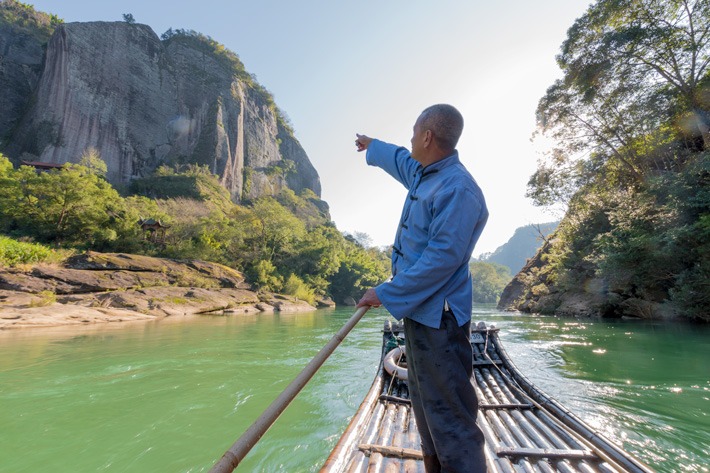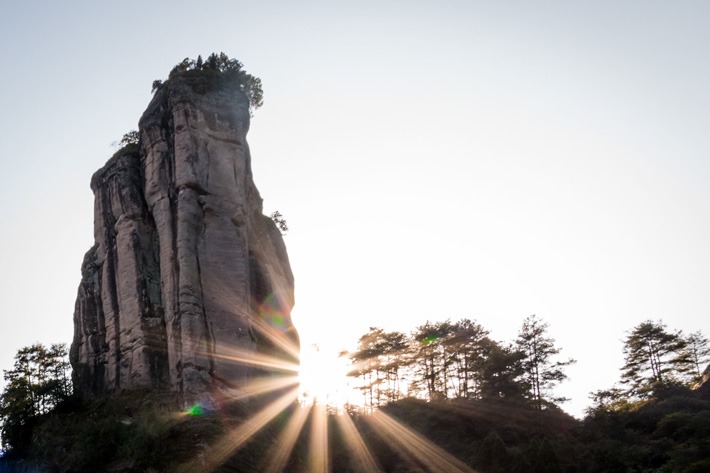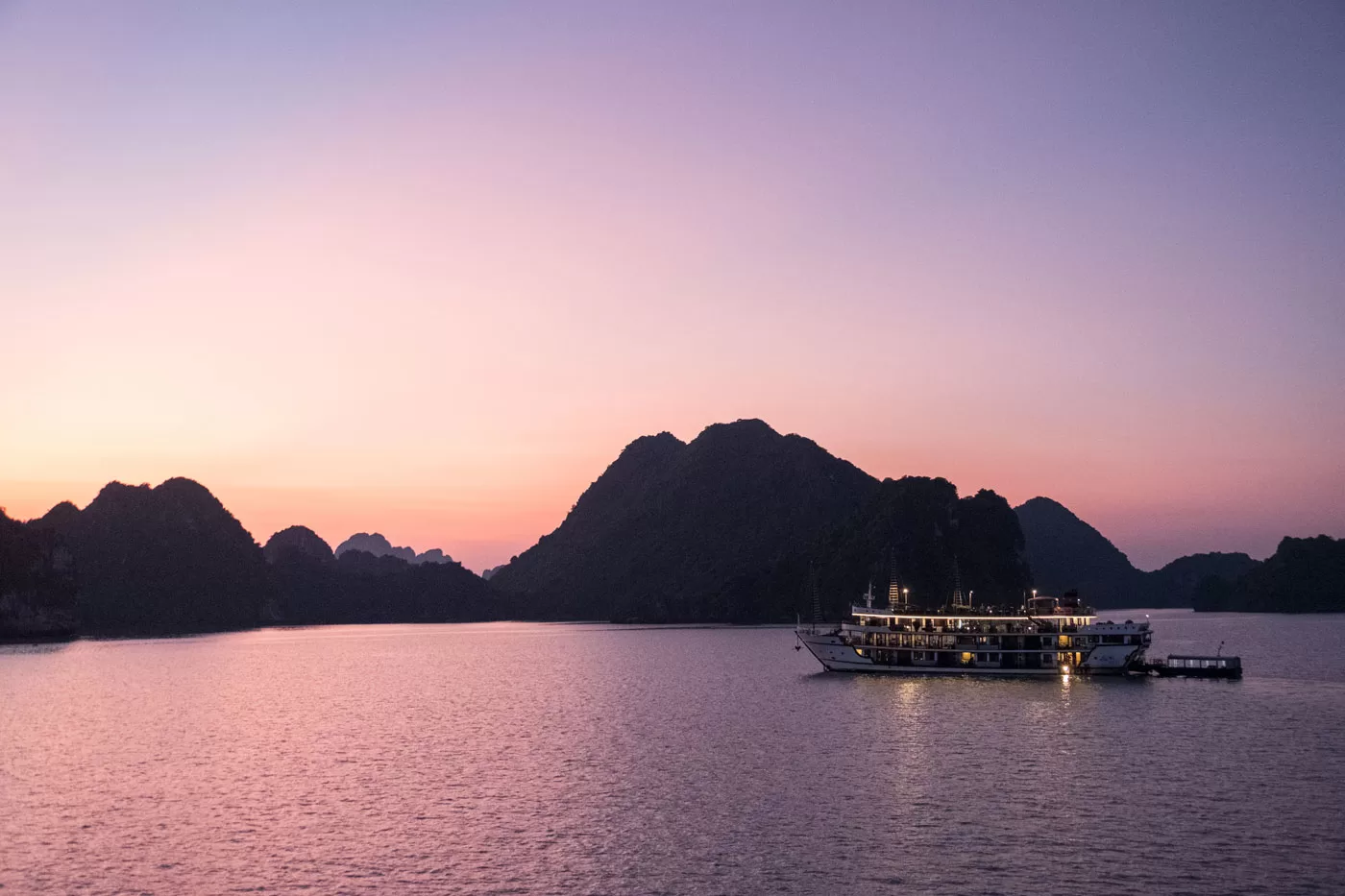
Rising out of the northern border of Fujian, Wuyishan (武夷山) maps some of the most impressive mountain landscapes in South-East China. The National Nature Reserve is home to an abundance of lush vegetation and towering red sandstones, giving it its recognition as a UNESCO site in 1999 as part of the world’s natural and cultural heritage.
Flowing amongst the vast greenery and deep canyons is Jiuqu River (九曲溪), the heart and soul of Wuyi. The river covers a distance of 9.5km and runs its ‘nine-bend’ course from the base of the highest Huang Guang Peak towards the main village of Xingcun.
There are many ways to explore this beautiful mountain range. With an average height of over 1,000 metres above sea level, many favour hiking up the many peaks for a panoramic view of the hilly terrains below. But a more intimate way to soak in the picturesque landscape is to drift down the river on an authentic bamboo raft.
These rafts are made from natural bamboo canes bounded tightly together, large enough to hold 6 seats and two raftsmen on each end. Life jackets are provided although rest assured the ride is very gentle and mostly shallow. In fact, through the clear water we could see the stones at the bottom and beautiful shoals of fishes swimming directly beneath us.
Reclining back in our seats, we watched the serene beauty unfold before our eyes. Magnificent cliffs banked on both sides as we glided swiftly downstream with the guidance of the raftsmen. Along with the gentle lapping of water around us, it welcomed a classic scene closely resembling a Chinese mountain and river scroll painting.
Each distinctive bend is marked by red calligraphy engraved on the rocks, on a countdown from the ninth to the first. Throughout the 2-hour journey, the raftsmen would provide entertaining commentaries and interesting legends about the unique formations of the rocks.
The most notable being the love story between Jade Maiden Peak (Yu Nu Feng) and the Great King Peak (Da Wang Feng). Since the narration was offered entirely in Mandarin, below is a brief summary from what I recall:
Once there lived a hard-working man named Da Wang who lived in Wuyishan. At the time, due to frequent floods the harvests were meager which left many farmers hungry and sick. Da Wang was aware of the dire situation and dug a river to discharge the flood water. With this, the Jiuqu River was formed and the village was saved.
One clear day, Yu Nu, the God-daughter from Heaven spotted this beautiful stretch of green fields below. Descending from the sky, she met Da Wang whom she soon fell in love with, married, and settled down together in this scenic wonderland.
Upon hearing this news, Yu Nu’s father up in heaven sent a messenger down to earth in hopes to convince his daughter to return. Without success, God became angry and ordered them to be transformed into a mountain. Still not satisfied that they were still “essentially” together, God sent a sinned man down as an iron plate (Tie Pan) which smashed the mountain into two peaks before turning into a peak himself.
And that’s how Yu Nu Peak and Da Wang Peak were separated. Today, you will see one on each side of the Jiuqu stream with the awkward third wheel Tie Pan (iron plate) Peak between the two.
Even though they could not see each other directly, they can still do so from the reflections of the river!
We listened to many more tales as each bend welcomed a new landscape. The raftsmen also pointed out a lot of ancient relics such as the mysterious boat-coffins wedged on the cliff amidst the fourth bend. With every-changing cloud reflections in the water, the stories added a magical spark which made it a light-hearted and relaxing way to de-stress whilst enjoying nature at its best.
As the ride drew to an end, the raftsmen guided our raft back to land. Here we soaked in the last few minutes of the journey before setting off on our next search; to explore the very place where the well-known Da Hong Pao (大红袍) tea originated from.
We hope this post has given you an insight into one of the most beautiful landscapes found in South-East China. If you have any questions or would like to get in touch, please feel free to drop us a comment below, shoot us an email or find us on instagram and facebook!




 Hello, we’re Eric and Sarah – a couple of travel photographers and creatives from the UK.
Hello, we’re Eric and Sarah – a couple of travel photographers and creatives from the UK.

